Question More, Action Knowledge.
Remember, at QMAK, we don’t just teach; we empower. We don’t just inform; we inspire. We don’t just question; we act. Become a Gold Member, and let’s unlock your child’s full potential, one question at a time.
 Have you ever been stuck in a long line at an amusement park, waiting to ride your favourite roller coaster?
Have you ever been stuck in a long line at an amusement park, waiting to ride your favourite roller coaster?
Or maybe you’ve tried to pour a big bucket of sand through a small funnel, and it took forever?
These are examples of bottlenecks – situations where something gets slowed down or blocked because of a specific point of congestion or restriction.
Bottlenecks are all around us, and understanding how they work can help us identify and overcome obstacles that might be limiting our progress or preventing us from achieving our goals.
A bottleneck is a part of a system that limits the overall output or flow of that system. It’s like a narrow point in a stream that causes the water to slow down or get backed up.
Bottlenecks can occur in all kinds of systems, from manufacturing plants to transportation systems to even our daily routines.
There are several reasons why bottlenecks can happen:
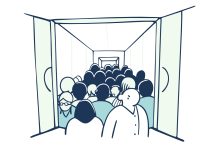
Physical Constraints: Sometimes, there’s a physical limitation that creates a bottleneck. For example, a narrow hallway or a small doorway can cause people to bunch up and move more slowly.

Process Inefficiencies: If a system or process isn’t designed well, it can create bottlenecks. For example, if there are too many steps involved in completing a task, it might take longer than necessary.

Management Problems: Poor communication, lack of organization, or unclear responsibilities can also lead to bottlenecks, causing delays and inefficiencies.
Bottlenecks can have a big impact on how well a system performs.
They can cause delays, increase costs, and even lead to frustration or dissatisfaction.
In some cases, bottlenecks can even cause a system to fail completely.
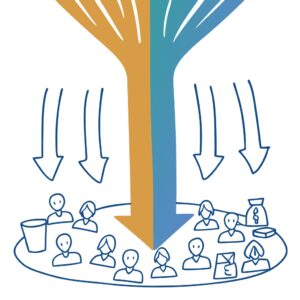
The good news is that bottlenecks can be identified and addressed.
Here are some ways to do that:
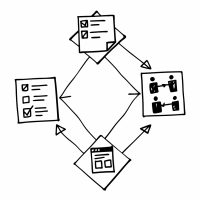
By breaking down a process into its individual steps, you can often spot the points where things get slowed down or congested.
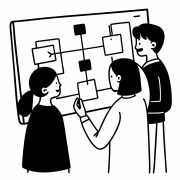
Keeping track of how well a system is functioning can help you pinpoint areas where bottlenecks might be occurring.
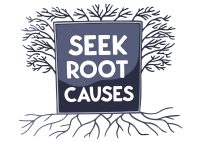
If you can identify the root cause of a bottleneck, you’re more likely to find an effective solution.
Once a bottleneck has been identified, there are several ways to overcome it, such as:
Sometimes, adding more resources or expanding a physical space can help eliminate a bottleneck.
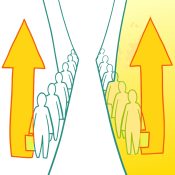
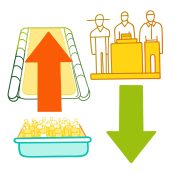
Finding ways to streamline a process or make it more efficient can reduce bottlenecks.
Better communication, organization, and accountability can help prevent bottlenecks caused by management issues.
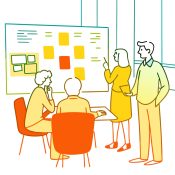
To really understand bottlenecks, it’s helpful to experience them firsthand.
Here are some fun activities to try:
Remember, bottlenecks are all around us, and understanding how they work can help us become more efficient, productive, and successful in all areas of our lives.
Ford v Ferrari offers an exhilarating exploration of bottlenecks through the high-stakes challenge of building a car capable of defeating Ferrari at Le Mans.
Through Carroll Shelby and Ken Miles’ journey to revolutionize Ford’s racing program, students witness how bottlenecks emerge at every level of complex systems – from technical constraints like engine overheating to organizational bottlenecks created by corporate bureaucracy.
The film demonstrates how identifying and addressing these constraints becomes crucial for success, whether it’s Miles testing the car’s limits on the track or Shelby navigating Ford’s rigid management structure.
As viewers follow the team’s progress from initial setbacks to eventual triumph, they learn how bottlenecks can either stifle innovation or, when properly understood, drive creative solutions.
Through the backdrop of 1960s motorsport, the film shows how recognizing and systematically addressing constraints – whether in machinery, organizations, or human relationships – can transform limitations into opportunities for breakthrough performance.
(Verse 1)
Waiting in line, feeling stuck and slow
A bottleneck’s got me moving at a crawl
Physical constraints, inefficiencies too
Bottlenecks are blocking my way through
(Chorus)
Oh, I’ve got the bottleneck blues
Slowing down my progress, making me confused
I need to find a way, to break through this delay
The bottleneck blues, they’re ruining my day
(Verse 2)
Management problems, communication’s a mess
Bottlenecks are causing me so much stress
Delays and frustrations, costs on the rise
I need to find a way to optimize
(Bridge)
Process mapping, performance monitoring
Root cause analysis, it’s all so intriguing
Increasing capacity, improving efficiency
Management improvements, the key to sufficiency
(Chorus)
Oh, I’ve got the bottleneck blues
Slowing down my progress, making me confused
I need to find a way, to break through this delay
The bottleneck blues, they’re ruining my day
(Verse 3)
Hands-on learning, let’s experience it live
Bottleneck relay race, observations to strive
Understanding bottlenecks, is the way to grow
Overcoming obstacles, letting progress flow
(Bridge)
From amusement parks, to our daily routines
Bottlenecks are everywhere, or so it seems
But with knowledge and skill, we can break them down
Eliminating bottlenecks, success will be found
(Chorus)
Oh, I’ve got the bottleneck blues
Slowing down my progress, making me confused
I need to find a way, to break through this delay
The bottleneck blues, they’re ruining my day
(Outro)
Bottlenecks may try to hold me back
But I’ve got the tools, to get my life on track
No more bottleneck blues, I’m breaking through
Overcoming obstacles, that’s what I’ll do!
Remember, at QMAK, we don’t just teach; we empower. We don’t just inform; we inspire. We don’t just question; we act. Become a Gold Member, and let’s unlock your child’s full potential, one question at a time.